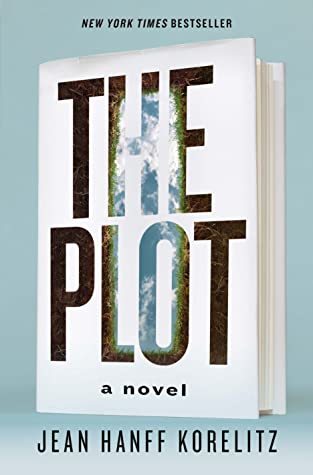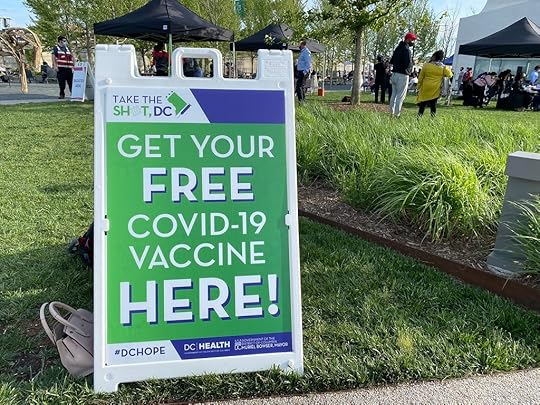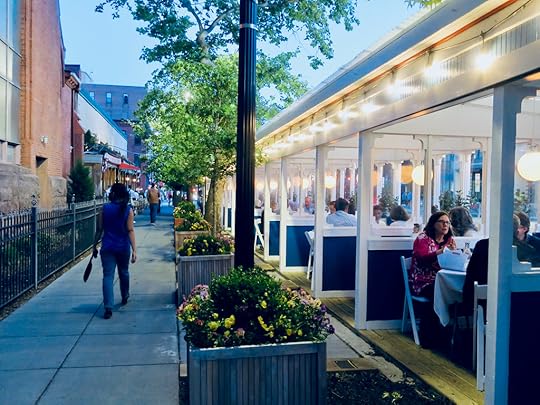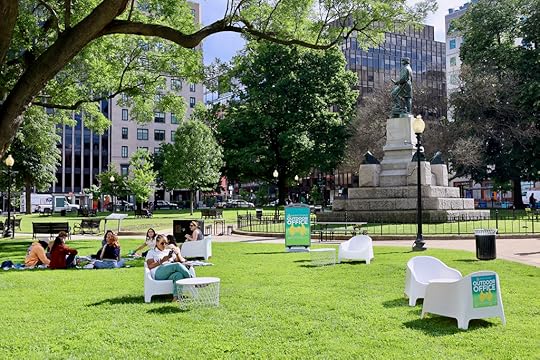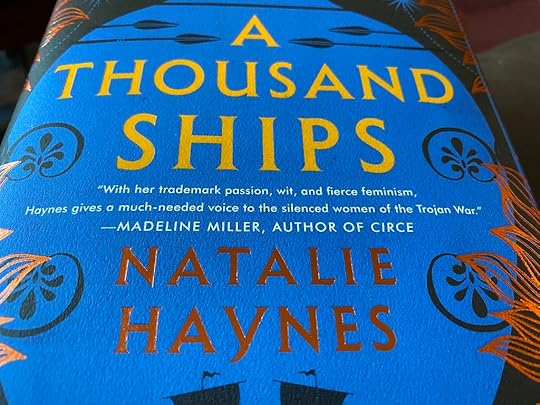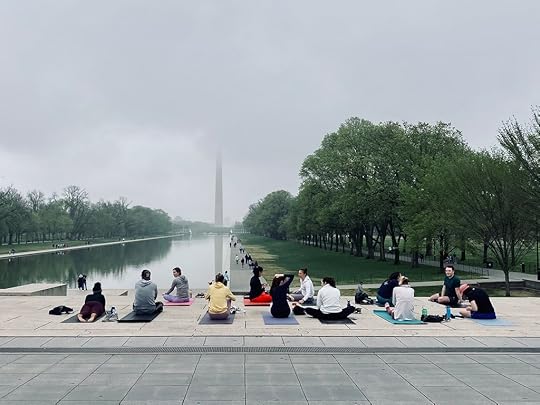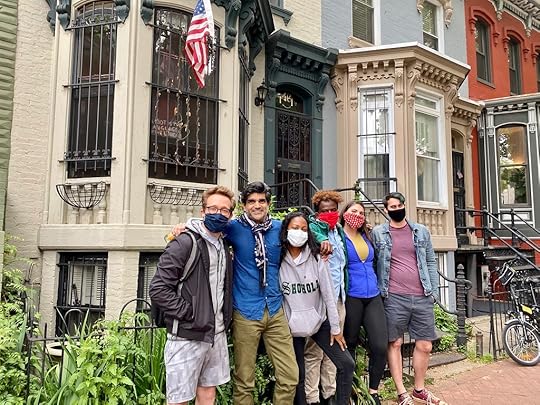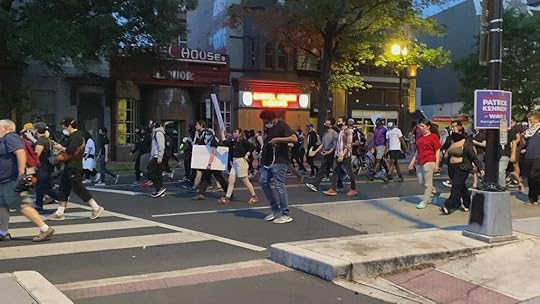Joe Flood's Blog, page 12
August 12, 2021
The Three-Body Problem
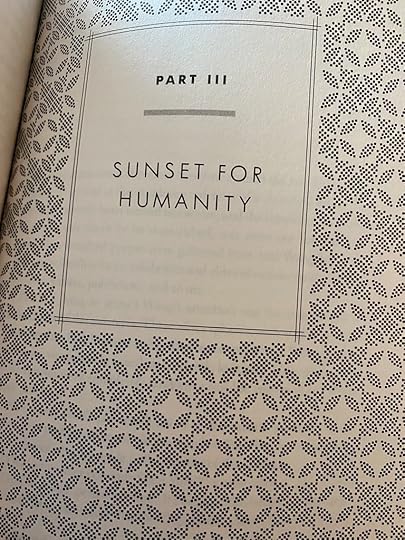 A typically upbeat section of The Three-Body Problem
A typically upbeat section of The Three-Body ProblemIt’s hard to describe The Three-Body Problem by Liu Cixin without giving away the plot. And I don’t want to spoil the surprises in this sci-fi novel.
Instead, I’ll describe how I felt as I read it.
HORROR
There’s the commonplace anxieties that make up much of life (and are mined endlessly for literary fiction) and then there’s the cosmic horror when you consider that your life is mere speck in the universe.
The Three-Body Problem engenders that feeling, especially the more deeply you read into the book. If H.P. Lovecraft studied astrophysics and quantum theory, then you’d get a novel like this one, full of very real and plausible terrors existing in deep space. Things to worry about that you’ve never worried about before, I guarantee it.
It makes you feel unimportant. What is one life, even if it’s yours, compared to the broad sweep of galaxies and the mysteries of space and time?
Matt Haig in The Midnight Library believes that every life is precious. But in Liu’s cold and unfeeling universe, individual lives matter little, compared to the needs of collective humanity.
Which brings me to my next emotion:
THANKFULNESS
After putting down the book, I had never been so happy to live on a stable planet orbiting a single, predictable sun.
With covid and coup attempts, I thought I was living in a dystopia now. Hah! The problems of 2021 are mere trifles compared to the world-ending dilemma of The Three-Body Problem.
IRRITATION
Is it the author or the translator? Did Liu Cixin write these clunky sentences (the dialogue in parts reads like a bad police procedural) or was it the translator, Ken Liu?
This isn’t a book with sweeping prose to thrill the heart. Instead, it plods along with long discursions on radio telescopes and nanoparticles. At times, I paged ahead to see if the plot got going again or if I should give up.
I kept going because it’s a really good mystery that Liu Cixin has set up. It’s a book about ideas – big ones – and not about characters, which are just clumsy pawns set against an unfeeling universe.
So, would I continue? Am I going to read the rest of the trilogy?
No!
While the ideas in the novel are fascinating (and troubling on a human level), I can’t read another huge book of clunky prose. Instead, I’ll wait for the Netflix series.
The post The Three-Body Problem appeared first on Joe Flood.
July 26, 2021
Lafayette Square Op-Ed Published in Washington Post
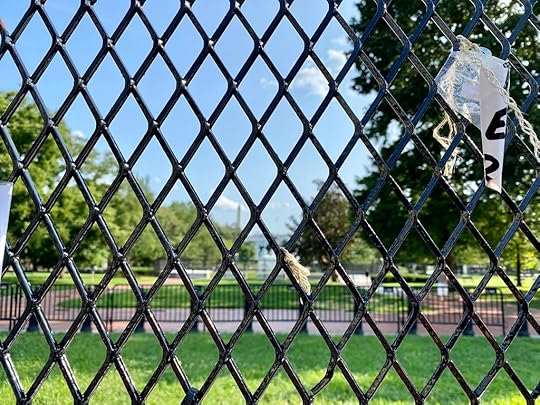 Lafayette Square locked up behind a fence
Lafayette Square locked up behind a fenceLafayette Square is open again, but it’s different now – that’s the title of my op-ed in the Washington Post.
I spent years walking through Lafayette Square on my way to work. This historic park was a constant in my life when all else changed. With the statue of Andrew Jackson in the middle of it, the square had a timeless quality.
I assumed Lafayette Square would be there forever. But after Trump had demonstrators violently cleared from the park, he put a fence around it.
Tyranny can take everything from you – even a park.
That’s the lesson of my op-ed.
I wrote about the park to share the local perspective. For the 700,000+ people who live in DC (like me), the parks and monuments are more than just tourist attractions. They are part of our lives.
Lafayette Square wasn’t history to me – it was a shortcut and a green respite from the busy city. I thought the park was sacred and inviolable. 2020 taught me that our institutions can be destroyed if not defended.
This isn’t the first op-ed I’ve had in the Post. See my articles for more.
The post Lafayette Square Op-Ed Published in Washington Post appeared first on Joe Flood.
July 7, 2021
The Plot
You can’t copyright a plot.
As a writer, people sometimes approach me with book ideas. They have the idea, they just need someone to “write it up.”
Sometimes, they even offer to split the profits with me. They’ve done the hard part, after all – thinking up the idea – and just need someone to put the words on the paper.
But an idea is nothing. It’s like saying that you have an idea for a bridge and just need someone to build it for you.
Which is why the central dilemma of The Plot didn’t resonate with me. In the novel, Jacob Finch Bonner steals the plot for a novel from one of his students.
Bonner turns the idea into a best-seller. And then is blackmailed by an anonymous figure who accuses him of being a thief. Bonner then desperately tries to cover up his “crime” while trying to figure out the identity of his accuser.
But it’s not a crime. As Bonner himself says, plots are in the air. They’re narratives we’ve heard a million times before, from the Odyssey to Star Wars. They’re stories we hear from friends. Things we read about in the newspaper. Tales we overhear on the bus.
All these plots – they say there are only seven of them – slosh around in the culture and get recycled time and time again.
Where would we be if we couldn’t use the material around us? My short story collection, Likes, is based upon things I experienced, heard about or read about. I take the stories that are in the air and refashion them into tidy short fiction.
Which is why I didn’t understand Bonner’s guilt in The Plot. Or why he was trying to unmask his blackmailer.
It’s the expression of the idea – not the idea itself – that is the real thing. Jacob Finch Bonner took a plot and turned it into a novel. He did the hard work. He did nothing wrong.
So, if you’re around a writer, be careful. We may steal your stories. And not feel guilty about it.
June 8, 2021
36 Images of DC at Exposed DC 2021
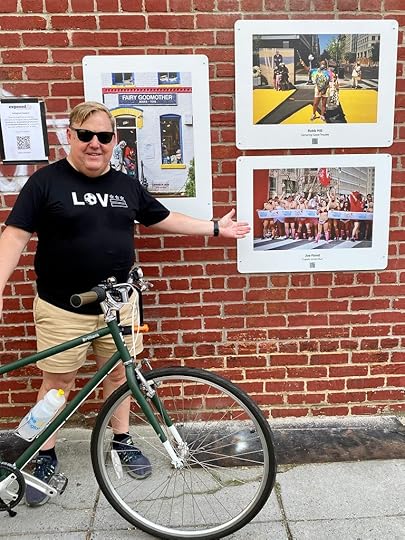 Me and my photo at Exposed DC
Me and my photo at Exposed DCGo see 36 images of DC from local photographers (including me) at the Exposed DC 2021 Photography Show.
Now in its 15th year, this outdoor exhibit of photos can be found in the alley next to Ellē restaurant at 3221 Mt Pleasant St NW.
My photo is of Cupid’s Undie Run, in which people race around the streets in their skimpies to raise money for charity. I took the photo in February 2020, just weeks before the pandemic struck.
During the dark days of covid, I’d go days without talking to another human, my only interaction with others at a distance, our mouths covered. It was surreal to look at photographs like this, with people not wearing masks or much else. It gave me hope to see humans doing something great together. Very together!
Exposed DC is one of my favorite things about Washington. I’ve been in the show before but what I love about it is all the different photographic takes on the city. I always discover places to visit and new ways of seeing DC from the show.
Check out these unique visions of our nation’s capital at the Exposed DC 2021 show until July 11. Free and in an alley – how cool is that?
The post 36 Images of DC at Exposed DC 2021 appeared first on Joe Flood.
36 Images of DC at Exposed DC
Go see 36 images of DC from local photographers (including me) at the 15th Annual Exposed DC Photography Show.
This outdoor exhibit of photos can be found in the alley next to Ellē restaurant at 3221 Mt Pleasant St NW.
My photo is of Cupid’s Undie Run, in which people race around the streets in their skimpies to raise money for charity. I took the photo in February 2020, just weeks before the pandemic struck.
During the dark days of covid, I’d go days without talking to another human, my interaction being at a distance, our mouths covered. It was surreal to look at photographs like this, with people not wearing face masks or much else. It gave me hope to see humans doing something great on a cold afternoon.
Exposed DC is one of my favorite things about Washington. I’ve been in the show before but what I love about it is all the different photographic takes on the city. I always discover places to visit and new ways of seeing DC from the show.
Check out these unique visions of our nation’s capital at the Exposed DC show until June 27. Free and in an alley – how cool is that?
The post 36 Images of DC at Exposed DC appeared first on Joe Flood.
May 19, 2021
Last Days of the Pandemic
“It’s the first time we’ve been out in a year,” a couple told me excitedly as we waited to get into happy hour at the Heurich House Garden.
I’ve been going to the garden since they opened in February. It’s a nice outdoor space within walking distance of my home. During the winter months, they served mulled wine (something I never thought I’d like) with enough alcohol content to keep me warm for a while. I’d meet friends there and we’d talk, until our extremities began to freeze.
The pandemic is coming to an end in Washington, DC. Mayor Bowser is ending mask mandates and other covid restrictions on Friday. Vaccines are freely available and incentives (such as free beer) are now being offered to get them.
Hard to believe that just two months ago, I was talking with my friends in the garden about the difficulty of obtaining a vaccine. Now, we’ve all been vaccinated.
I am deeply thankful for this amazing development that was only possible due to big government and American ingenuity.
In these last days of the pandemic, I have a certain wistfulness about what we will lose with the return of “normal” life.
Last year, DC was so empty that I could run in the street. Now, the drivers are back and running in the street would be a death sentence. Literally – traffic deaths have risen dramatically, despite Mayor Bowser mouthing Vision Zero platitudes.
We learned how to eat outside in any weather. 14th St is lined with outdoor tables on the street, protected from traffic and sheltered from the weather. Some are quite elaborate, like the cozy little rooms at Le Diplomate.
Outdoor drinking in DC has become ubiquitous, even infamous. Logan Circle Park is known locally as Club Logan. On the weekends, the grass is packed with picnickers sipping to-go drinks from the bars on 14th St.
While the neighborhoods are rocking, not much is going on downtown. With the federal government teleworking, south of K Street is deserted. Most of the coffee shops and restaurants are closed. The city is trying to lure people back with things like the outdoor office in Farragut Square.
The General Services Administration, where I work, was already teleworking a majority of the time, pre-pandemic. No one had assigned desks; everyone had laptops. Hoteling, they called it. Nothing really changed for us when the pandemic hit.
GSA is not alone. Many organizations have discovered that they can work successfully online. Office space will be shed – what’s the point of leasing square footage downtown for people who aren’t there? Maybe you need a DC address or place for meetings but you don’t require a whole floor on K Street.
For many businesses, the question will be not when everyone goes back to the office but who actually needs to be there.
I thought that COVID-19 would end with a bang. A celebration as people discarded their masks and resumed life.
Instead, everyone is cautiously exploring the world once again, like the couple I met in the garden. They will discover an America that has changed utterly.
The post Last Days of the Pandemic appeared first on Joe Flood.
April 19, 2021
A Thousand Ships
If you liked Circe by Madeline Miller, then you’ll enjoy A Thousand Ships by Natalie Haynes.
This is a novel about the Trojan War, but from the women involved, from meddling goddesses to ordinary mortals, all caught up in a civilization-ending cataclysm.
I love contemporary takes on Greek mythology. For this book, it helps to know a bit about the Odyssey and the Iliad. If not, there’s a guide at the beginning of the book to the characters.
In this novel, the muse Calliope sings, but of the women. The goddesses Hera, Aphrodite and Athena who forced Paris to make a fateful judgement. Hecuba, enslaved, with her city destroyed. Clytemnestra slowly plotting revenge against her husband.
My favorite part was Penelope musing as she hears increasingly fantastical tales about her long-missing husband, Odysseus, and his wanderings through the known world after the fall of Troy. Supposedly on his way home, he sure gets kidnapped by beautiful women a lot.
Like Circe, this is another book where the man of twists comes off badly.
Which is why I liked Circe and A Thousand Ships so much. Both novels deconstruct Greek fables and force us to look at them with modern eyes. Maybe The Odyssey isn’t a tale of adventure and perhaps Penelope wasn’t as faithful as she appears. What woman wouldn’t get impatient with a man who goes out of his way to piss off Poseidon?
These stories have endured over the centuries because they are complex, with many layers, and contain dilemmas and challenges that even modern readers can appreciate. A Thousand Ships breaths life into these ancient tales to create a beautiful novel of women’s voices.
The post A Thousand Ships appeared first on Joe Flood.
April 12, 2021
After the Pandemic: What Matters Now?
A friend asked me if I’m writing anything.
During the pandemic, I wrote LIKES, a book of short stories about social media.
But now I’m writing nothing.
My books have always been very topical. I write about the times. LIKES is about about social media obsession, THE SWAMP concerns DC during the Obama years and MURDER ON U STREET is a story about gentrification.
Yet, I cannot write about the coronavirus or the other traumas of the past year, like the January 6th assault on the Capitol. My fiction reworks reality, reframing it and pouring it into the mold of dark comedy. But 2020 was too deadly and chaotic to turn into anything coherent.
With vaccines and seasonality, coronavirus in America is ebbing. DC is springing back to life, full of people once again, the empty streets of last year now just a memory.
During the pandemic, every choice you made had meaning. Even the simplest ones. I felt accomplished just biking to 350 Bakery for a scone. Riding a bike kept me healthy while spending my money locally kept people employed.
Now that era is over and the American consumption machine is roaring back to life. Storefronts are no longer dark and brunchgoers fill 14th Street again.
On Saturday, I was at the Lincoln Memorial. The steps were crowded with people, a yoga class was going on, joggers were going by. It was beautiful to see.
And yet, seeing normal life resume made me feel: too soon.
Two weeks after I got vaccinated, I went to a bar. Something I had been looking forward to for months. With antibodies in my veins, I could drink beer and eat wings again. I could sit at a table and talk to other humans.
Yet, it was not as satisfying as those early-morning bike trips to 350 Bakery. I’d take bikeshare, buy a scone and then walk home.
Life during the pandemic gave me purpose, imbuing even the simplest of actions with meaning.
Normal life is returning. In America, that means a frenzy of buying and selling. Our nation is gearing up to spend once again.
I’m not writing because I can’t answer the question: what matters now?
The post After the Pandemic: What Matters Now? appeared first on Joe Flood.
March 12, 2021
Behind the Photo: Rahul Dubey
I have a photo of Rahul Dubey in the Swann Street Report from the ACLU, which covers the mass arrest of protesters in DC. Here’s the story behind it.
June 1, 2020, was a very dark day in Washington’s history. The night before, protests against the death of George Floyd had grown violent. Windows were smashed downtown and drug stores hit by gangs of pill thieves.
Trump decided he had to do something. That something was a PR stunt.
Protesters were violently cleared from Lafayette Park so that Trump could have a photo-op with a Bible. The Park Police and other agencies beat and tear-gassed people protesting police violence, just in time for the national news.
But that was just the start of the rampage. In addition to the police, armed troops were let loose upon the city. From my apartment a mile from the White House, I watched Black Hawk helicopters thunder at rooftop height. From the seventh floor, I was at eye-level with the pilots.
With a curfew in place, most of the protesters went home. Some carried on and were joined by others outraged by what had happened in Lafayette Park. I slipped out of my apartment and filmed as they marched up 14th St.
The Metropolitan Police Department got ahead of them, blocked off streets and redirected the protesters until they were trapped on the 1400 block of Swann St NW.
I know the street well, having lived at 15th and Swann for years. My short story, Apartment 101, which won the Washington City Paper contest, was set there. Swann Street is a narrow, one-way street lined with gingko trees that turn gold in the fall.
On the night of June 1, I read alarming tweets from the block as kids were “kettled” by the MPD. The city had been sued for using this tactic and had to pay out millions in settlements. But now they were kettling people again.
As the young protesters were squeezed together, sprayed with pepper spray and arrested, a hero emerged: Rahul Dubuy, who opened his home to protesters, giving them shelter.
I still live in the neighborhood and was outraged that such violence could happen here. The next morning, I hopped on Capital Bikeshare to see for myself. On Swann Street, there was little sign of the chaos from the night before. Rahul was standing out front with a few of the teens that he had sheltered from the police.
I introduced myself and said what had happened was terrible. I then asked if I could get a picture, wanting to memorialize this hero. It’s an iPhone shot and shows how comfortable Rahul is with the people that he had just had met hours earlier. He not only opened his home to them, he kept them safe with the police pounding on his door.
That’s a remarkable act of courage, demonstrating a faith in humanity that was rare in 2020, which is why he is a hero.
The post Behind the Photo: Rahul Dubey appeared first on Joe Flood.
Rahul Dubey Photo in ACLU Swann Street Report
I have a photo in the Swann Street Report from the ACLU, which covers the mass arrest of protesters in DC. Here’s the story behind it.
June 1, 2020, was a very dark day in Washington’s history. The night before, protests against the death of George Floyd had grown violent. Windows were smashed downtown and drug stores hit by gangs of pill thieves.
Trump decided he had to do something. That something was a PR stunt.
Protesters were violently cleared from Lafayette Park so that Trump could have a photo-op with a Bible. The Park Police and other agencies beat and tear-gassed people protesting police violence, just in time for the national news.
But that was just the start of the rampage. In addition to the police, armed troops were let loose upon the city. From my apartment a mile from the White House, I watched Black Hawk helicopters thunder at rooftop height. From the seventh floor, I was at eye-level with the pilots.
With a curfew in place, most of the protesters went home. Some carried on and were joined by others outraged by what had happened in Lafayette Park. I slipped out of my apartment and filmed as they marched up 14th St.
The Metropolitan Police Department got ahead of them, blocked off streets and redirected the protesters until they were trapped on the 1400 block of Swann St NW.
I know the street well, having lived at 15th and Swann for years. My short story, Apartment 101, which won the Washington City Paper contest, was set there. Swann Street is a narrow, one-way street lined with gingko trees that turn gold in the fall.
On the night of June 1, I read alarming tweets from the block as kids were “kettled” by the MPD. The city had been sued for using this tactic and had to pay out millions in settlements. But now they were kettling people again.
As the young protesters were squeezed together, sprayed with pepper spray and arrested, a hero emerged: Rahul Dubuy, who opened his home to protesters, giving them shelter.
I still live in the neighborhood and was outraged that such violence could happen here. The next morning, I hopped on Capital Bikeshare to see for myself. On Swann Street, there was little sign of the chaos from the night before. Rahul was standing out front with a few of the teens that he had sheltered from the police.
I introduced myself and said what had happened was terrible. I then asked if I could get a picture, wanting to memorialize this hero. It’s an iPhone shot and shows how comfortable Rahul is with the people that he had just had met hours earlier. He not only opened his home to them, he kept them safe with the police pounding on his door.
That’s a remarkable act of courage, demonstrating a faith in humanity that was rare in 2020, which is why he is a hero.
The post Rahul Dubey Photo in ACLU Swann Street Report appeared first on Joe Flood.

